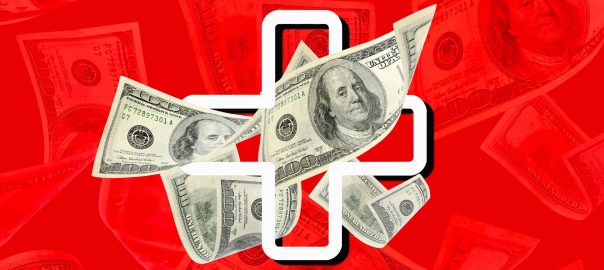How to protect your employees from medical debt
It takes more than just having health insurance to prevent the leading cause of bankruptcy. This healthcare expert details two underutilized ways to fight back.
Employers have long understood the value of protecting the physical and financial well-being of their team. That’s how healthcare benefits and employment became linked in the first place.
But as premiums and deductibles have increased, the effectiveness of medical benefits alone to prevent medical debt—which is the leading cause of bankruptcy in the U.S.—has eroded. A new study from Goodroot found that 43% of people with employer-provided insurance have experienced medical debt.
Today’s employers need to take steps beyond just offering health insurance to ensure the well-being of their team. Doing so helps avoid major, more expensive health crises down the road; the medical debt study also found that of employees who have experienced medical debt, 92% have skipped at least some medical care to avoid costs.
Here are two strategies companies can adopt to prevent their employees from delaying necessary care and to protect them from the financial hardship that can come with care.
Hospital financial assistance: An underutilized tool
To maintain their tax-exempt status, nonprofit hospitals are required to offer free and discounted care to eligible patients based on income. The income threshold for these programs can be surprisingly high. It’s usually a multiple of the poverty line—often 400%—which means a family of four earning $120,000 a year qualifies in many areas (and even up to $180,000 in some areas).
Hospital financial assistance programs were mandated by the Affordable Care Act, but a lot of the details of how they are implemented and promoted were left open to interpretation. Goodroot’s medical debt study found that half of employees earning less than $100,000—who very likely would qualify for these programs—don’t know they exist. Of those who do know about the programs, many wrongly assumed they aren’t eligible because they have insurance.
Ideally, there would be a mechanism in place that prompts qualifying patients to apply before or after receiving care, but that very often is not the case. That means employers have a role to play and can close the knowledge gap by making employees aware of these programs and how to apply for them. The process is different for each hospital, so employers can do the initial legwork of rounding up the necessary website links and forms for employees to apply and encouraging all of them to do so.
Using hospital financial assistance can reduce a five- or six-figure hospital bill to zero in some cases. Even employees with higher incomes who just barely qualify for the programs could save 25% or more on their bill.
Benefit navigation helps avoid medical debt
Using healthcare benefits is not as easy as it should be. While measures like the No Surprises Act have removed some of the worst potential pitfalls, the fact remains that making cost-effective choices in the healthcare marketplace requires a level of skill, understanding, and time that the average person simply doesn’t have.
Benefit navigation provides resources for employees to better understand and use their healthcare benefits. The most effective versions of this type of service offer live, one-on-one guidance from an expert. Employees can get help with comparison shopping, negotiating bills, and generally taking every possible step to avoid medical debt.

For instance, the cost of a planned procedure such as an MRI can vary by hundreds or thousands of dollars based on where it takes place. Employees are unlikely to investigate multiple options ahead of time to compare costs, but a benefit navigator can do that for them. If their deductible hasn’t been met, that’s direct out-of-pocket savings.
After receiving care, employees typically get a very confusing bill in the mail. A benefit navigator can review these for errors, which the majority of bills do contain. They can also negotiate a lower bill; there is a surprising amount of wiggle room in medical bills if you know where to look and how to ask, which is where benefit navigators excel.
Rather than assuming your employees will navigate their benefits effectively, giving them some assistance in our very complex healthcare landscape not only helps them save money (as well as saving the company money if you’re self-funded), it also helps them feel more supported by their employer as they make high-stakes health and financial decisions.
ABOUT THE AUTHOR
Fast Company
(3)








